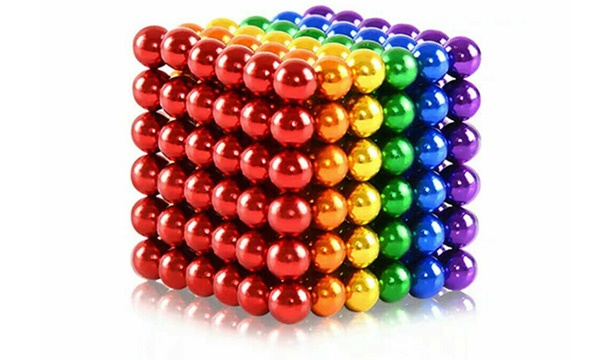

We offer magnetic beads in different size, which has an impact on handling and purification results. The absence enhances the effectiveness of the magnetic separation of cells or biomolecules 1. Here comes the superparamagnetic behaviour, which shares with ferromagnetism the high levels of magnetization reached under the influence of a low magnetic field and with paramagnetism the absence of magnetization when the external magnetic field is removed. These single-domain magnets align all their magnetic moments in the same direction, so that when an external magnetic field is applied the resulting magnetization is the largest possible for that specific material and size.

Superparamagnetic cores appear, depending on materials, in particles below 50 nm with a single magnetic domain. Possible downfalls are self-magnetism and unwanted attachment to metal surfaces. The strong magnetic field leads to a fast separation of the beads in the magnetic field. They retain this magnetic moment even after removal of the magnetic field. They are typically either Ferrimagnetic, or superparamagnetic 3(fig.2).įerrimagnetic magnetic cores are with over 30 nm relatively large with a strong magnetic moment. Magnetic beads used in purification contain a magnetic core which is covered in different materials. Compare and order our bead-based products!ĭifferent surface modifications and bead sizes allow for choosing the optimal product for the right molecule to be coupled.The general workflow can be summarized in three general steps (fig.1): This method does not require columns or centrifugation steps, and are therefore ideal in high-throughput and automated applications. The easy and efficient collection of beads in magnetic fields allows for easy rinsing and removal of excess reagents and ligand after coupling the ligand molecule, as well as usage in downstream applications. Magnetic Resonance Imaging and Magnetic Particle Imaging.As carriers of antigens, antibodies, catalyzers, proteins and nucleic acids for tissue specific targeting.The beads can be further used in following applications 1: Magnetic Cell Separation, also known as Magnetic Activated Cell Sorting is accomplished on the basis of certain surface structures of the cells, in contrast to common separation techniques like like filtration or centrifugation. It can be utilized for the manipulation of biological material, including cells, nucleic acids, proteins microorganisms. The magnetic beads technology has a lot of application fields. Annexin V-FITC Apoptosis Detection Kits.Non magnetic Ni-NTA, Ni-IDA and fast flow beads are also available. The capacity of purified 6X His-tagged proteins (~35kDa) captured by G-Biosciences’ Ni-NTA Magnetic Beads is ≈5 mg/ml. Bound proteins can be directly used in downstream applications or be eluted off the beads. Due to the high affinity, Ni-NTA Magnetic Beads can be used for capturing 6X His-tagged proteins.īound 6X His-tagged proteins can be temporarily immobilized under magnetic attraction, so non-tagged proteins in the supernatant can be removed easily and efficiently. Ni-NTA Magnetic Beads have nitrilotriacetic acid (NTA) groups with charged nickel covalently bound to the surface dextran of the beads.


G-Biosciences’ Ni-NTA Magnetic Beads are 3µm beads designed for the rapid purification of X His-tagged proteins.


 0 kommentar(er)
0 kommentar(er)
